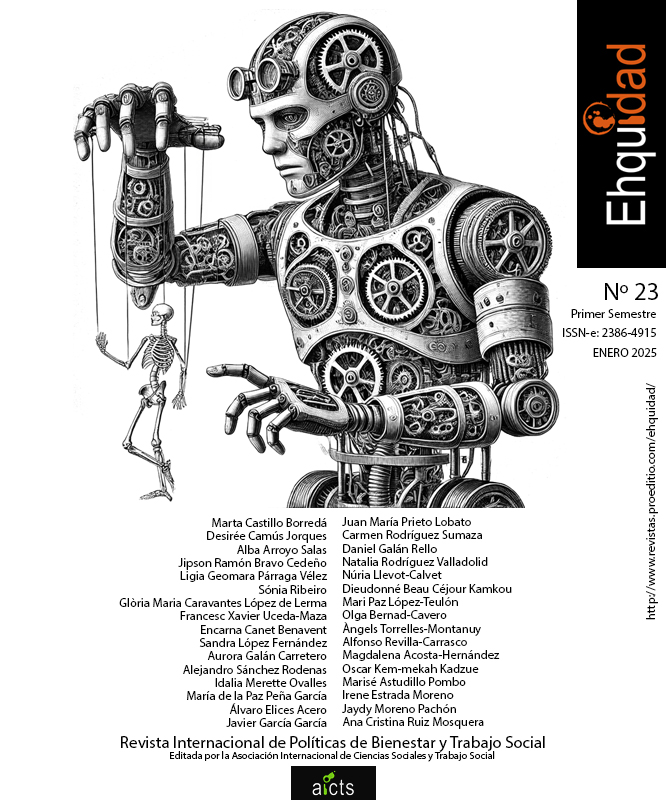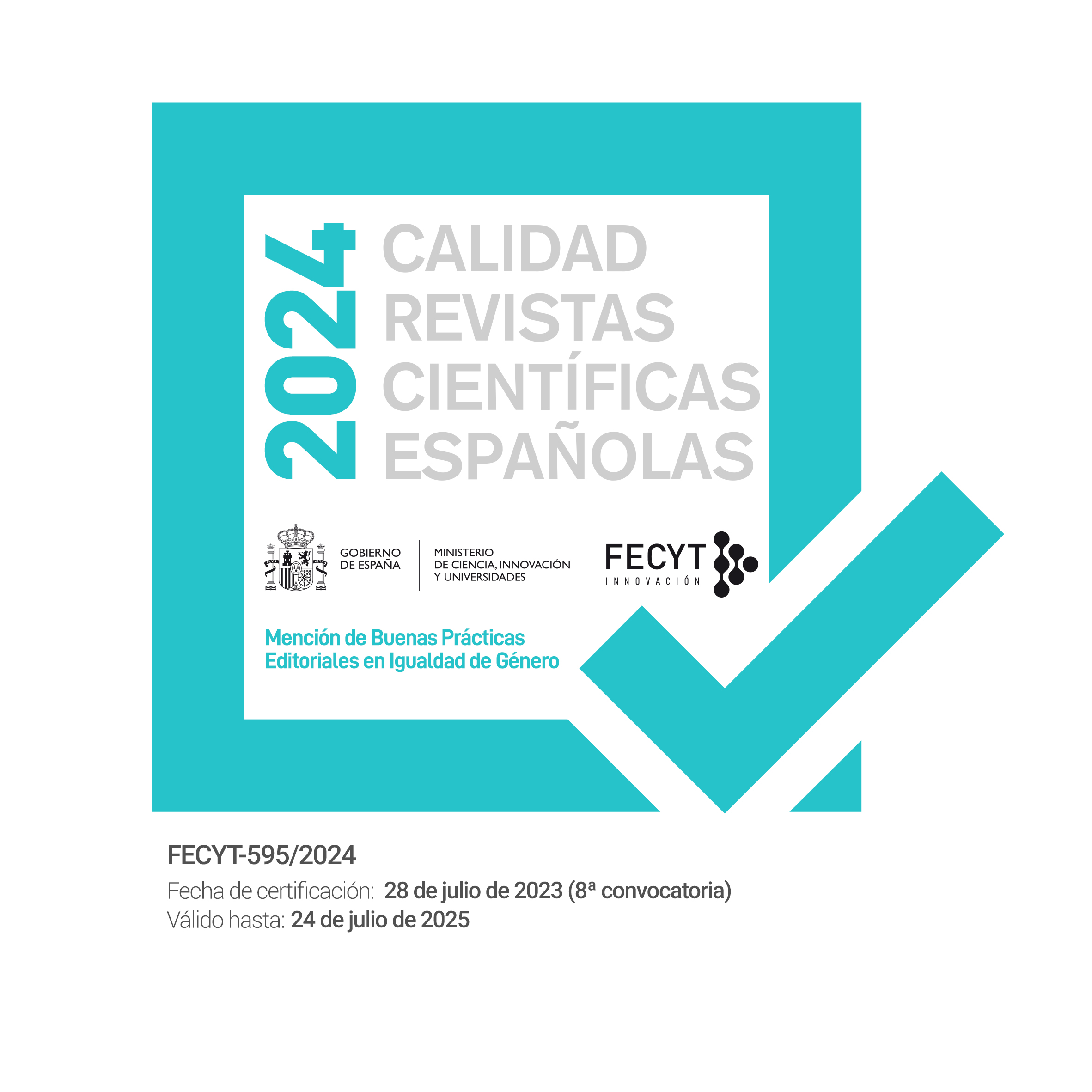A socio-historical journey from the voice of the footwear workers: situations and conditions since the 70s
DOI:
https://doi.org/10.15257/ehquidad.2025.0005Keywords:
Footwear sector, working conditions, precariousness, temporality, employment, footwear, laborersAbstract
This article analyzes the changes experienced in the footwear sector from the 1970s to the present day from the discourses of the garment factory laborer. A socio-historical review from the perspective of male and female labourers will allow us to better understand working conditions, trade union struggles, gender inequalities and other relevant aspects. The research approach is qualitative; It recomposes and analyzes the collective narrative of the protagonists through ten semi-structured interviews. The findings show the trend towards new, more precarious hiring models that translate into wage impoverishment. The following lines include the changes that working conditions have undergone from the 70s to the present: schedules, seniority or breaks. Overall, as the results show, there has been a historical trend towards the loss of rights.
Downloads
References
Acedo Ramírez, M. Á., y Rodríguez Osés, E. (2003). Estudio empírico del endeudamiento, coste de la deuda y rentabilidades de la industria del calzado de La Rioja: comparación por tamaño y sector. Management Letters / Cuadernos de Gestión, 3(1), 123–142. http://hdl.handle.net/10810/7079
Arqimandriti, M., Llubani, M., y Ljarja, A. (2016). Wage and Labour Conditions of Shoe and Garment Workers in Albania. Gender Alliance for Development Center.
Braun, V., y Clarke, V. (2006). Using thematic analysis in psychology. Qualitative Research in Psychology, 3, 77-101. https://doi.org/10.1191/1478088706qp063oa
Bibiloni Amengual, A., y Pons Pons, J. (2001). La fuerza de trabajo en la industria del calzado de Mallorca, 1900-1970. VII Congreso Asociación Española de Historia Económica, 1–27. https://hdl.handle.net/11441/100062
Castro Castell, O., Ojeda Pérez, R. M., Sánchez Murillo, L. F., Reyes Ospina, N. A., y Rodríguez Núñez, K. V. (2016). Análisis de las políticas de comercio exterior en Colombia para disminuir el ingreso de mercancías del sector textil y calzado provenientes de China. Revista Via Iuris, 21, 127–146. https://dialnet.unirioja.es/servlet/articulo?codigo=6610316
Creswell, J. 2013. “Steps in Conducting a Scholarly Mixed Methods Study”. DBER Speaker Series, November. https://digitalcommons.unl.edu/dberspeakers/48.
Cutillas Orgilés, E. (2007). La diferenciación social en un espacio periférico: las ciudades de Villena, Yecla y Almansa. Papeles de Geografía, 45, 67–89. https://dialnet.unirioja.es/descarga/articulo/2471564.pdf
Dussel Peters, E., Moreno Brid, J. C., Isabel, S., Joaquín, S., y Carlos, R. J. (2018). La renegociación del TLCAN: Efectos arancelarios y el caso de la cadena del calzado. Investigación Económica, 77(303), 3–78. https://www.scielo.org.mx/scielo.php?script=sci_arttext&pid=S0185-16672018000100003
Fasson Llosa, A. (2021). La sombra de la industria de la moda, textil y fashion retail. Revista de La Facultad de Ciencias Económicas, 27(2), 15–23. https://revistas.unne.edu.ar/index.php/rfce/article/view/5655
French, J. L., y Wokutch, R. E. (2005). Child Workers, Globalization, and International Business Ethics: A Case Study in Brazil’s Export-Oriented Shoe Industry. Business Ethics Quarterly, 15(4), 615–640. https://doi.org/10.5840/beq200515443
Galán Carretero, A. (2014). Calzados Coloma: Empresa pionera del fordismo español (Almansa, 1900-1936) Instituto de Estudios Albacetenses “Don Juan Manuel”. http://iealbacetenses.dipualba.es/viewer.vm?id=0000001763
García Martínez, F. J. (1990). La industria del calzado de Almansa: de los orígenes a la industria sumergida. Cuaderno de Estudios Locales-II ÉPOCA, 9, 1–29. https://torregrandealmansa.com/category/cuadernos/cuaderno-no9/
Gómez Cortés, J., Sánchez Uribelarrea, M. J., y Piqueras García, R. (1984). Evolución de la población de Almansa en el decenio 1970-1980. Cuadernos de Geografía, 35, 211–228. https://dialnet.unirioja.es/descarga/articulo/37618.pdf
González-Ferriz, F. (2021). Análisis de los factores determinantes del resultado exportador en las empresas españolas del sector calzado. Revista de Estudios Andaluces, 42, 138–157. https://doi.org/10.12795/rea.2021.i42.07
Hernández Águila, E. de la P. (2007). Retos y perspectivas de la industria mexicana del calzado ante la apertura comercial. El impacto de la competencia con China. Espiral, 13(40), 95–121.
http://148.202.18.157/sitios/publicacionesite/pperiod/espiral/espiralpdf/espiral40/95.pdf
Hernández Piqueras, J. L. (2011). Los movimientos sindicales y la lucha social en Almansa. II. De la derrota de la República a la consolidación de la democracia. Altabán Ediciones.
INE (2020). Estructura y Dinámica empresarial en España. Instituto Nacional de Estadística, Madrid. https://industria.gob.es/es-es/estadisticas/Estadisticas_Territoriales/Estructura-Dinamica-Empresarial-2020.pdf#:~:text=La%20distribuci%C3%B3n%20de%20las%20empresas%20espa%C3%B1olas%20seg%C3%BAn%20los,su%20actividad%20dentro%20del%20sector%20resto%20de%20servicios.
Marco-Lajara, B., Zaragoza Sáez, P. del C., Martínez-Falcó, J., y Seva-Larrosa, P. (2021). Los distritos industriales zapateros de las comarcas españolas del Vinalopó: Un análisis detallado. Revista Espacios, 42 (2), 185–202. https://doi.org/10.48082/espacios-a21v42n02p15
McIntosh, M. J., y Morse, J. M. (2015). Situating and Constructing Diversity in Semi-Structured Interviews. Global Qualitative Nursing Research, 2, 2333393615597674. https://doi.org/10.1177/2333393615597674
Molina Ochoa, M. J., Garmendia López, I., y Mangas Martín, V. J. (2011). Evaluación medioambiental del sector del calzado: casos de Almansa y Elda. Cuides. Cuaderno Interdisciplinar de Desarrollo Sostenible, 7, 163–184.
Morse, J. M. (2015). Critical Analysis of Strategies for Determining Rigor in Qualitative Inquiry, 25(9), 1212–1222. https://doi.org/10.1177/1049732315588501
Paucar Samaniego, M., Pilamunga Poveda, E. M., Santamaría Aguirre, J. L., y Edisson, V. (2023). Problemática del sector productivo del calzado de Tungurahua: perspectivas estratégicas desde el ámbito del diseño. Cuadernos Del Centro de Estudios En Diseño y Comunicación. Ensayos, 180, 155–171. https://dialnet.unirioja.es/descarga/articulo/8897264.pdf
Pereda Hernández, M.-J. (2011). Los movimientos sindicales y la lucha social en Almansa. I. El movimiento obrero en Almansa hasta 1939. Altabán Ediciones.
Ponce Herrero, G. (1986). Determinantes físicos y humanos en le corredor de Almansa. In III Coloquio nacional de geografía agraria?: actas (1st ed., pp. 515–524). Consejería de Agricultura y Comercio.
Ponce Herrero, G. (1997). Industria y medios de transporte en los corredores de Almansa y del Vinalopó. Investigaciones Geográficas (España), 18, 99–114. https://dialnet.unirioja.es/descarga/articulo/111670.pdf
San Miguel del Hoyo, B. (1998). Los trabajadores de la industria del calzado de Elche: cambios en las condiciones de vida y de trabajo (1960-1997) [Tesis Doctoral Universitat d’Alacant - Universidad de Alicante]. http://hdl.handle.net/10045/4000
Tamindžija, B., Aleksi?, S., y Musiolek, B. (2017). Focus: Terms and conditions of employment in the garment and shoe industry in Serbia1. SEER: Journal for Labour and Social Affairs in Eastern Europe, 20(2), 187–196. http://www.jstor.org/stable/26427180
B. Torres, R., y Tri Prasetyo, Y. (2020). Evaluation of ergonomic working conditions among manual leather cutter in the Shoe Industry. Proceedings of the 6th International Conference on Industrial and Business Engineering, 221–227. https://doi.org/10.1145/3429551.3429582
Van Rensburg, M., Nkomo, s’Phumelele, y Mkhize, N. (2021). Characterization and pyrolysis of post-consumer leather shoe waste for the recovery of valuable chemicals. Detritus, 92–107. https://doi.org/10.31025/2611-4135/2021.14064
Ybarra Pérez, J. A., del Hoyo, B., Hurtado Jordá, J., y Santa María Beneyto, M. J. (2004). El calzado en el Vinalopó, entre la continuidad y la ruptura . IDELSA. http://www.elche.me/monografia/ua-el-calzado-en-el-vinalopo-entre-la-continuidad-y-la-ruptura-2004
World Footwear 2023 Yearbook (2023). World Footwear by Portuguese Shoes. https://www.worldfootwear.com/world-footwear-yearbook.html












